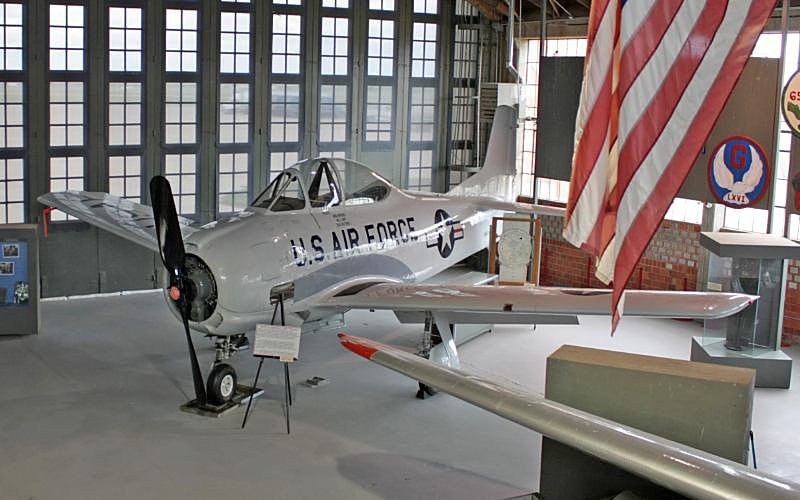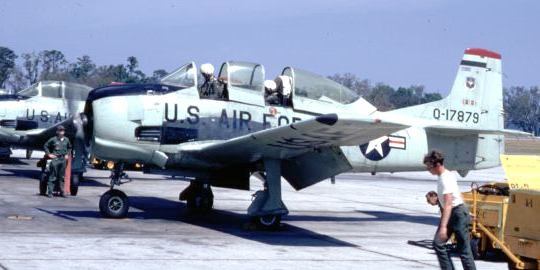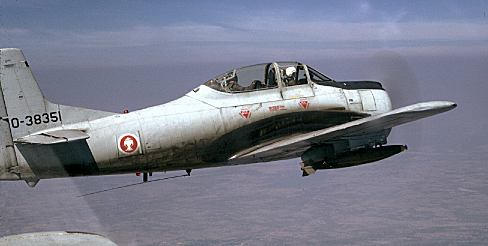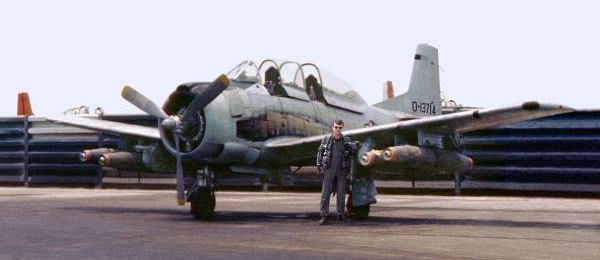| North American T-28 "Trojan" |
T-28A at Hangar 25 Air Museum |
| The maximum speed of the T-28A is 288 MPH, and the service ceiling is over 29,000 feet. The T-28A on display was flown to the Air Museum in April 2003, and is fully operational. |
T-28A Preparing for an Instrument Training Flight (student in rear cockpit)
|
The first T-28 made it's initial flight on Sept. 24, 1949. Designed as a replacement for the T-6 trainer, the "Trojan" went into production in 1950. The USAF version (T-28A) was powered by an 800 HP Wright R-1300 radial engine, whereas later US Navy versions (T-28B and C) were powered by the 1,425 HP Wright R-1820 radial engine. When production ended in 1957, a total of 1,948 aircraft in the three versions had been built. (Click thumb for larger) |

AT-28D on a Close Air Support Mission

|
In 1962 the USAF began a program to modify a large number of T-28s as Tactical Fighter-Bombers for counterinsurgency warfare in Southeast Asia. Equipped with the larger engine, these aircraft, designated as AT-28Ds, proved to be a very effective weapon in Close Air Support (CAS) missions. (Click thumb for larger)
|
Webmaster with AT-28D on the flightline at Phnom Penh, Khmer Republic (now Cambodia),
ready for a Close Air Support Mission.

|
The AT-28D was a very capable counterinsurgency aircraft. The maximum gross weight was 13,000 pounds which gave it a useful weapons payload of up to 4,000 pounds. The aircraft had up to six hard points and a typical armament load included 500 pound bombs, 2.75 inch rockets and up to four, .50 cal machine guns. The ordinance on the aircraft in this image is four, 500 pound (class) unfinned napalm and two, .50 cal machine guns in pods.
|

|




![]()
![]()